During the last two weeks, Mozilla has released both the Internet Health Report, an open source effort to explore the state of human life on the internet, and an addendum to the Mozilla Manifesto. Both tie closely to our mission to keep the internet open, accessible and welcoming for all.
We’re proud of these efforts — as well as all the fellowships, campaigns, events and other activities that Mozilla Foundation does every year to create a healthier and more inclusive internet. Yet, these activities are only one piece of the puzzle. The people behind Mozilla — our staff and our community — are also core to who we are and the change we’re making in the world.
Diversity and Inclusion at Mozilla
With this in mind, we have been working diligently over the last two years to understand and improve our diversity and ensure that people feel welcomed and included at Mozilla.
It’s important that we define what we mean with diversity and inclusion. Mozilla defines diversity as the mix of people in our organization and inclusion as getting our specific mix of people to work well together, to invite voices forward, to speak boldly but respectfully — and listen intently. This isn’t just aspirational thinking, or lofty ideals. It’s smart business: We know that we need community members and staff who understand, listen to and collaborate with each other and represent the global community we serve.
At the Foundation, our diversity and inclusion efforts have included confronting tough questions about the mix of people within the organization. Today we are sharing our progress to date, including a breakdown of the current staff at the foundation. We are also sharing our anticipated next steps in this journey — we know we still have a lot to do.
Who we are
At the end of 2017, Mozilla Foundation has staff in four countries: The United States, Canada, the United Kingdom and Germany. Like many nonprofits, we have a higher proportion of women than men in our workforce: 58.4% women and 41.6% men, with an increase in men’s representation of 1.8% over 2016. We are proud to see a similar representation in our leadership with an even split between men and women in leadership (director and above).
Mozilla Foundation Gender Diversity (Global)
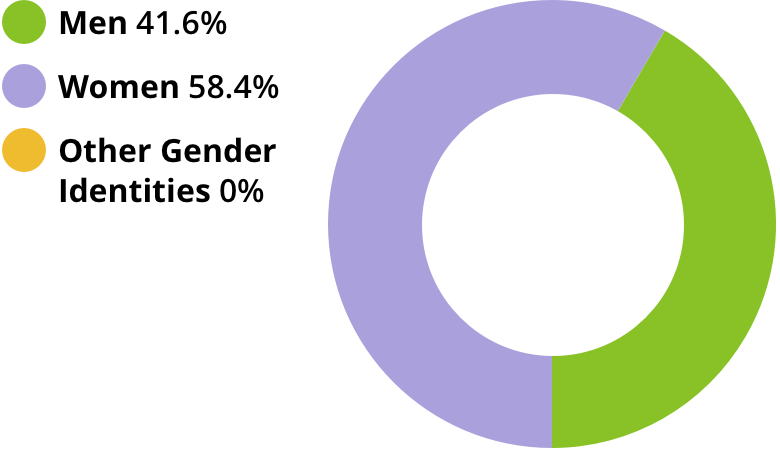
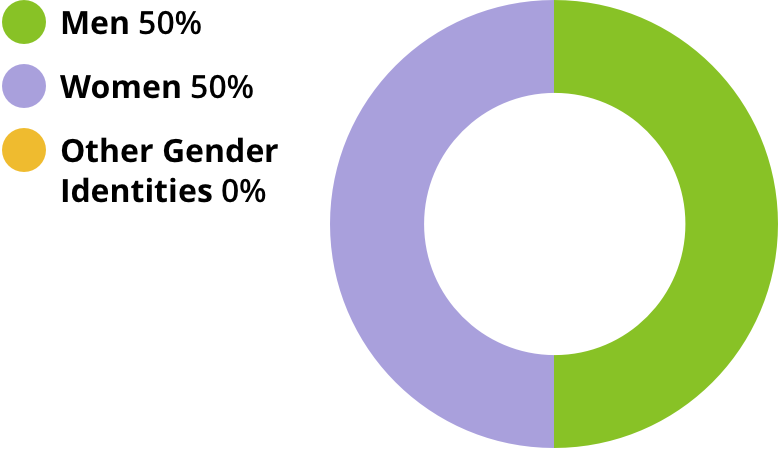
Mozilla Foundation staff are increasingly diverse in terms of race and ethnicity. Nearly 30% of our staff in the United States are People of Color, an increase of almost 6% from 2016.
Mozilla Foundation Racial and Ethnic Diversity (US Only)
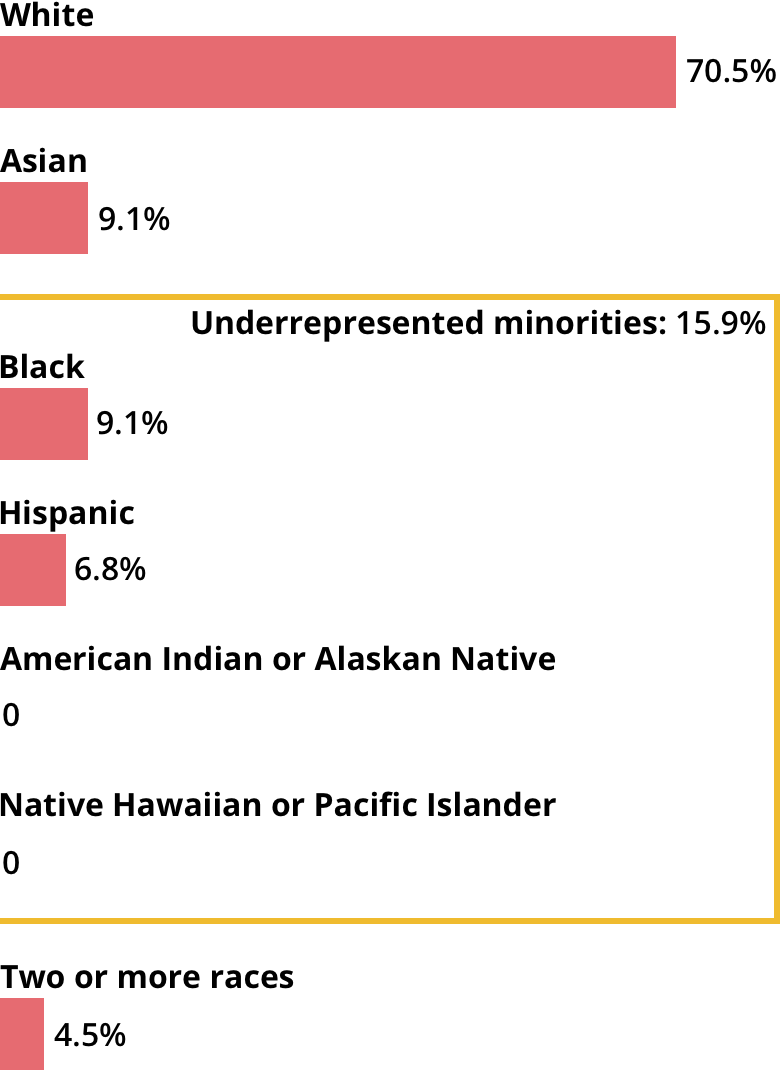
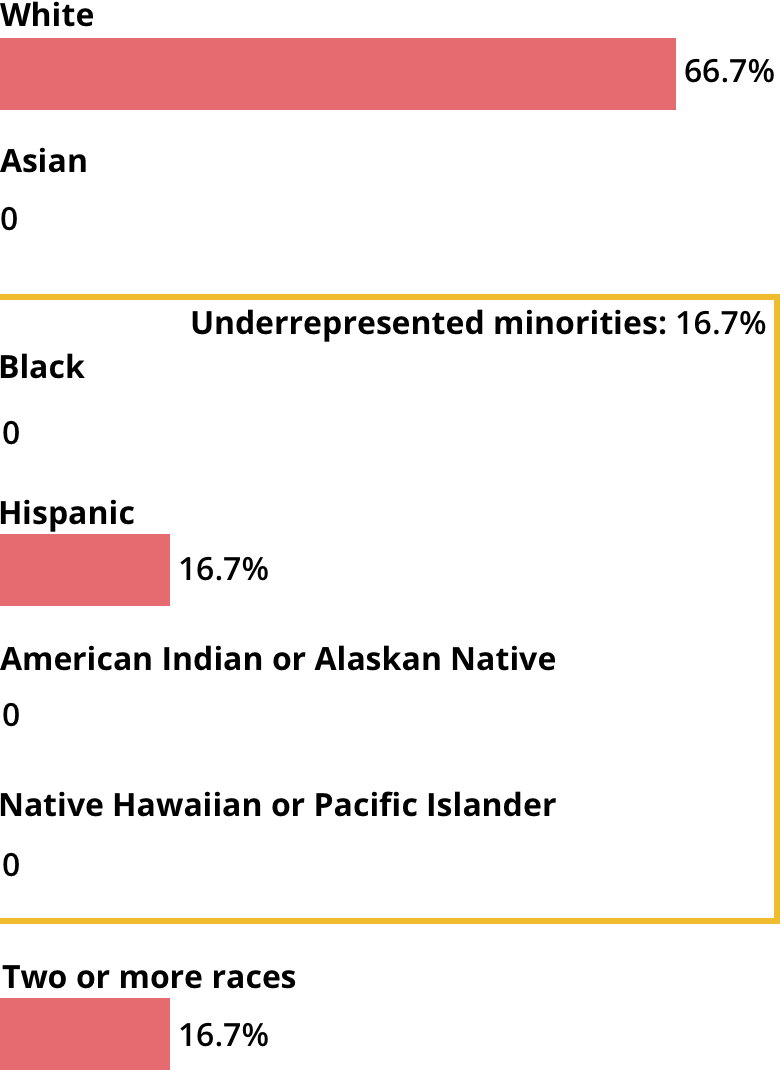
It is worth noting that only 58% of our leadership and 52% of our total staff are based in the United States. We are not yet able to collect race and ethnicity information about staff outside the US.
Our median age is 35 and we have staff representing every generation in today’s workforce.
Mozilla Foundation Age Diversity (Global)
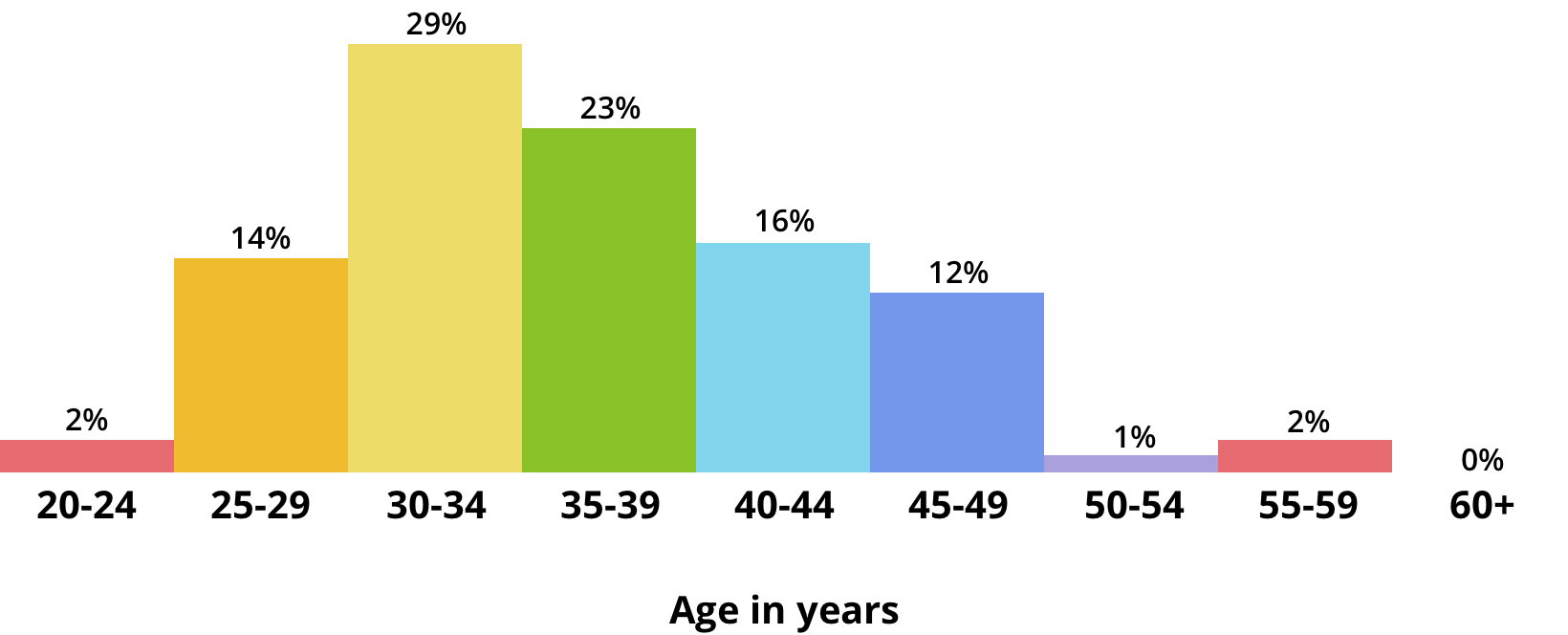
Our staff bring a wide array of diversity and expertise from grassroots organizers and communications specialists to engineers and designers to experts in non-profit management and fundraising. The key to harnessing the full value of their expertise is to create an ever more inclusive environment in which to collaborate. We began measuring several elements of diversity and inclusion in our employee engagement survey and and have increased scores 14 percentage points since we first measured in November 2015.
Building a more diverse and inclusive Mozilla
Ultimately, our goal is to create a more diverse and inclusive Mozilla — and an internet that is truly open and accessible to everyone. We know we have much more to do to make this a reality. We have a number of things we’re working on this year to push ourselves further, with efforts spanning our staff, community and our programs.
On the staffing front, we’re focused both on recruitment and the experience of people while working at the Foundation. We continue to provide Inclusive Hiring training for all Foundation managers (mandatory) and to actively debias job descriptions, hiring criteria and selection tools. We also remain committed to drawing from diverse candidate pools and have diversity represented in final rounds of the interview process for all positions. For existing staff we are launching employee affinity groups over the coming months and for all Director+ roles we are rolling out an Inclusive Leadership training program. We have set a goal to increase the sense of connection and inclusion amongst remote employees, as measured by the diversity and inclusion metrics in our staff engagement survey. We will report out on these efforts on an ongoing basis, including periodic updates to the staff mix numbers included earlier in this post.
We are also committed to diversity and inclusion within our community. For example, over the past two years, we were successful in creating a more diverse mix of gender, race, identity, expertise amongst our fellows. This year, we are focused on increasing geographic diversity and reach, with a goal of 75% of fellowship applicants coming from outside North America. We are locating our incoming VP, Leadership Programs, in the Berlin office, with an aim to increase our focus on community development in Europe, the Middle East and Africa. We have added a new Global Participation Lead role to the Foundation team, with a mandate to find easier entry points for people from all parts of the world who want to participate in Mozilla efforts.
And, of course, our programs themselves have a strong focus on digital inclusion — with the aim of making the digital world we all live in more welcoming, inclusive and diverse. This digital inclusion section of this year’s Internet Health Report includes articles with titles like: Carving out safe spaces for LGBTQ rights; Fighting online harassment with artificial intelligence; and Emoji politics: where grassroots meets big tech. It also looks at diversity in the tech sector. In addition, Mozilla and the National Science Foundation are investing funds into a variety of digital inclusion issues, including at $2M prize for technical solutions to connecting the unconnected in the United States. We will continue to cover and focus on issues like these in coming years.
Success to us is creating an environment that is open and inclusive of all dimensions of diversity, amongst our staff, within our community and on the internet as a whole. We look forward to continuing to share with you about what we learn along the way.
Methodology
All diversity data are self-reported and drawn from Mozilla Foundation’s Human Resources Information System (HRIS) for regular employees as of December 31, 2017. Progress over 12 months is compared against December 31, 2016. Leadership representation is comprised of all directors and above. We recognize that gender identities exist on a spectrum and intend to offer a more inclusive set of choices to our employees on gender identity, disability, veteran status and other diversity dimensions before next year’s disclosure. All race data are for US employees only, and categories are driven by US government requirements for disclosure. We share more about our organization’s work and finances as part of our annual State of Mozilla report.
Data
| Overall | Leadership | |
|---|---|---|
| Men | 41.6% | 50% |
| Women | 58.4% | 50% |
| Other Gender Identities | 0% | 0% |
| Overall | Leadership | |
|---|---|---|
| White | 70.5% | 66.7% |
| Asian | 9.1% | 0 |
| Black | 9.1% | 0 |
| Hispanic | 6.8% | 16.7% |
| American Indian or Alaskan Native |
0 | 0 |
| Native Hawaiian or Pacific Islander |
0 | 0 |
| Two or more races | 4.5% | 16.7% |
| Age in years | Overall |
|---|---|
| 20-24 | 2% |
| 25-29 | 14% |
| 30-34 | 29% |
| 35-39 | 23% |
| 40-44 | 16% |
| 45-49 | 12% |
| 50-54 | 1% |
| 55-59 | 2% |